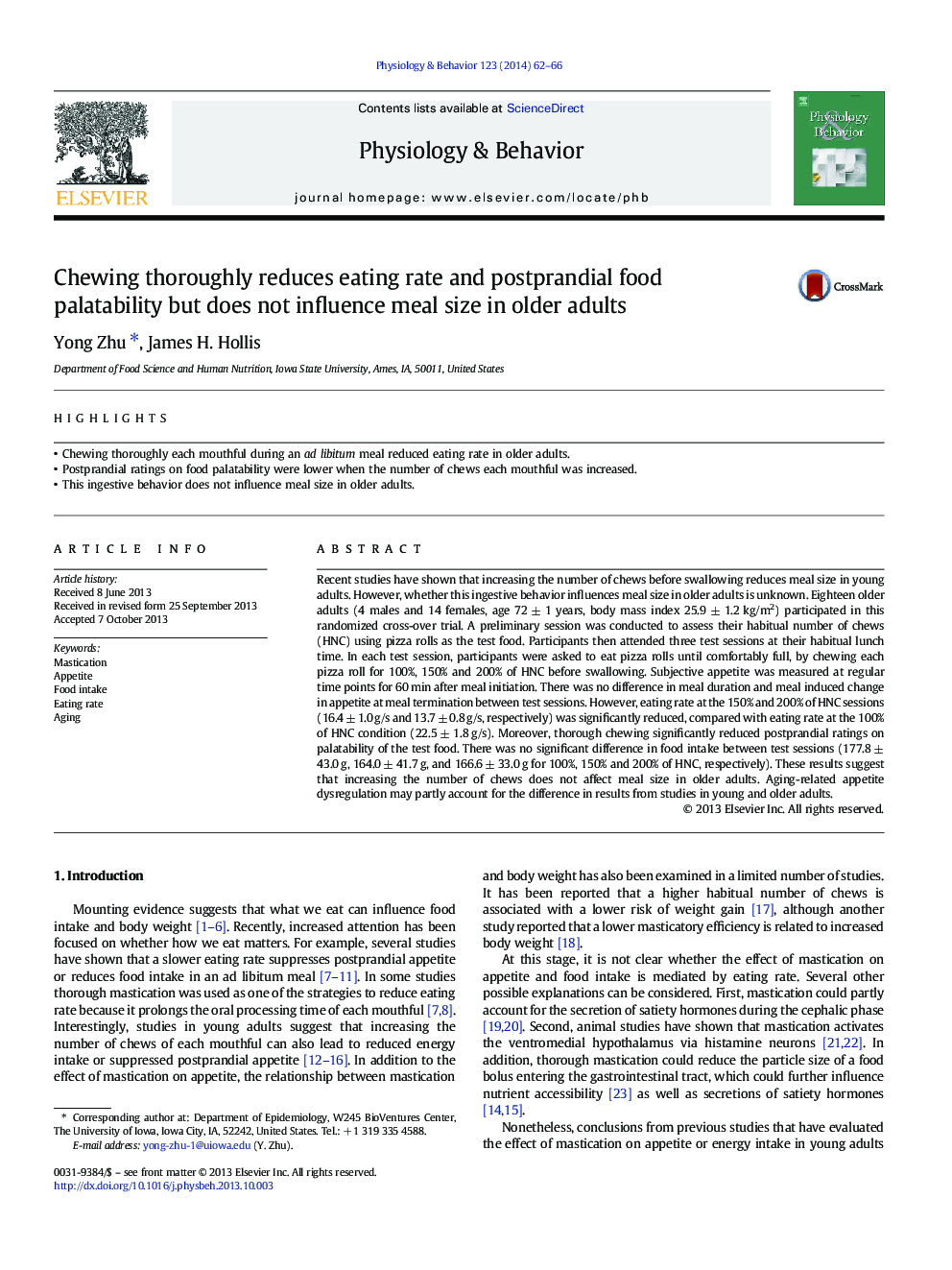| Article ID | Journal | Published Year | Pages | File Type |
|---|---|---|---|---|
| 5924547 | Physiology & Behavior | 2014 | 5 Pages |
Abstract
Recent studies have shown that increasing the number of chews before swallowing reduces meal size in young adults. However, whether this ingestive behavior influences meal size in older adults is unknown. Eighteen older adults (4 males and 14 females, age 72 ± 1 years, body mass index 25.9 ± 1.2 kg/m2) participated in this randomized cross-over trial. A preliminary session was conducted to assess their habitual number of chews (HNC) using pizza rolls as the test food. Participants then attended three test sessions at their habitual lunch time. In each test session, participants were asked to eat pizza rolls until comfortably full, by chewing each pizza roll for 100%, 150% and 200% of HNC before swallowing. Subjective appetite was measured at regular time points for 60 min after meal initiation. There was no difference in meal duration and meal induced change in appetite at meal termination between test sessions. However, eating rate at the 150% and 200% of HNC sessions (16.4 ± 1.0 g/s and 13.7 ± 0.8 g/s, respectively) was significantly reduced, compared with eating rate at the 100% of HNC condition (22.5 ± 1.8 g/s). Moreover, thorough chewing significantly reduced postprandial ratings on palatability of the test food. There was no significant difference in food intake between test sessions (177.8 ± 43.0 g, 164.0 ± 41.7 g, and 166.6 ± 33.0 g for 100%, 150% and 200% of HNC, respectively). These results suggest that increasing the number of chews does not affect meal size in older adults. Aging-related appetite dysregulation may partly account for the difference in results from studies in young and older adults.
Related Topics
Life Sciences
Biochemistry, Genetics and Molecular Biology
Physiology
Authors
Yong Zhu, James H. Hollis,
